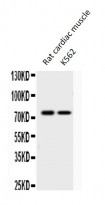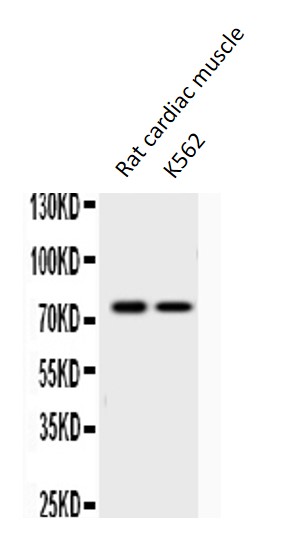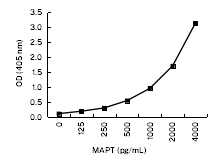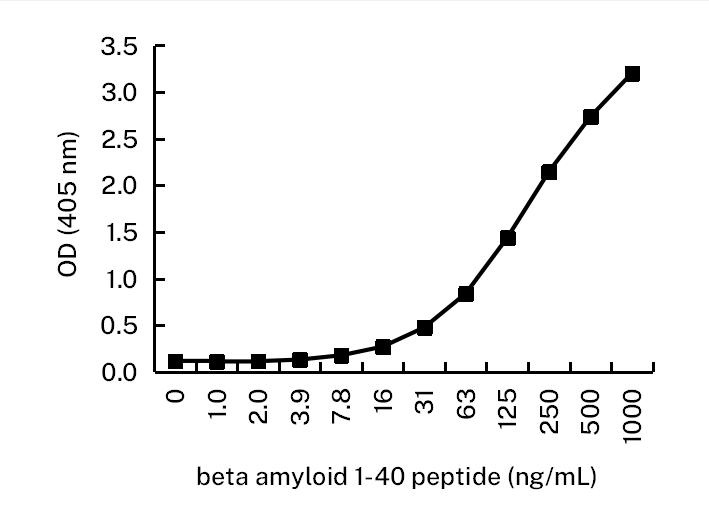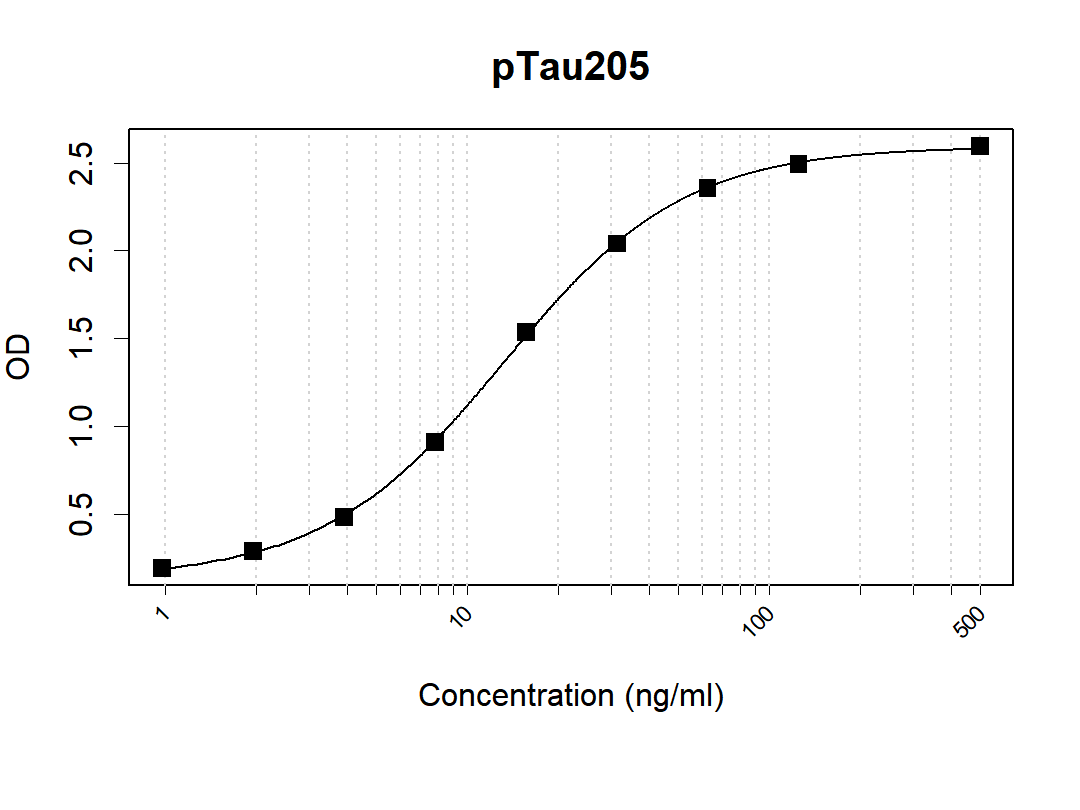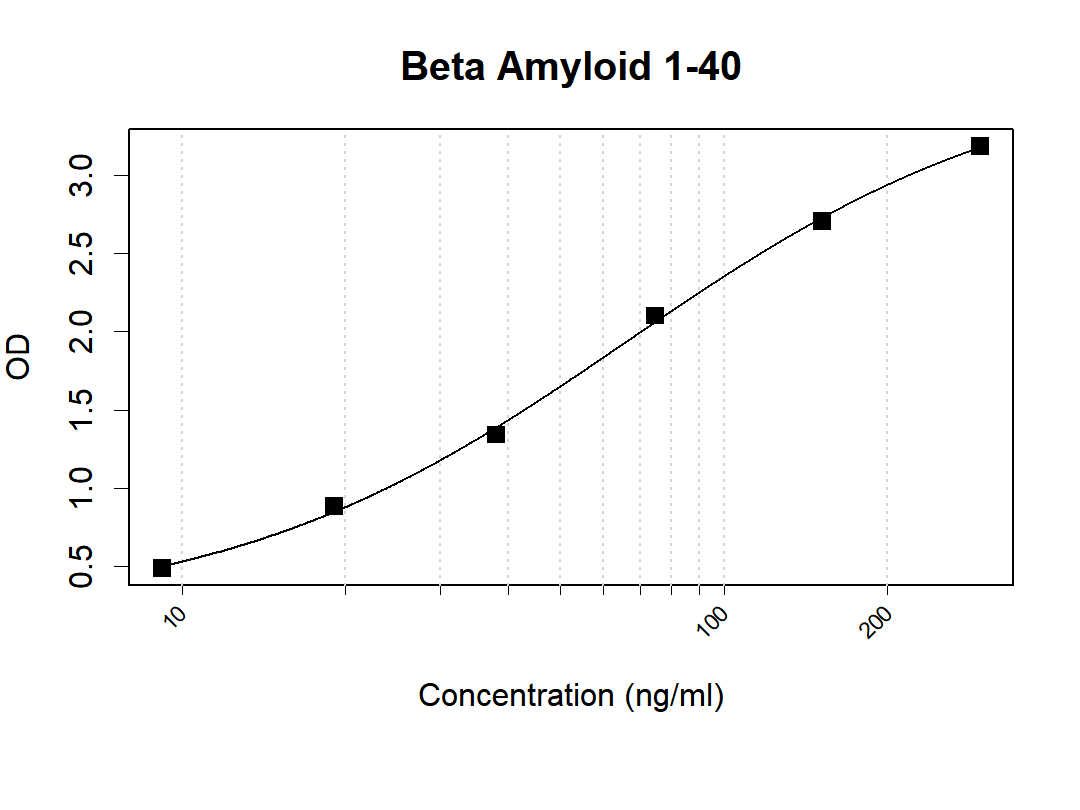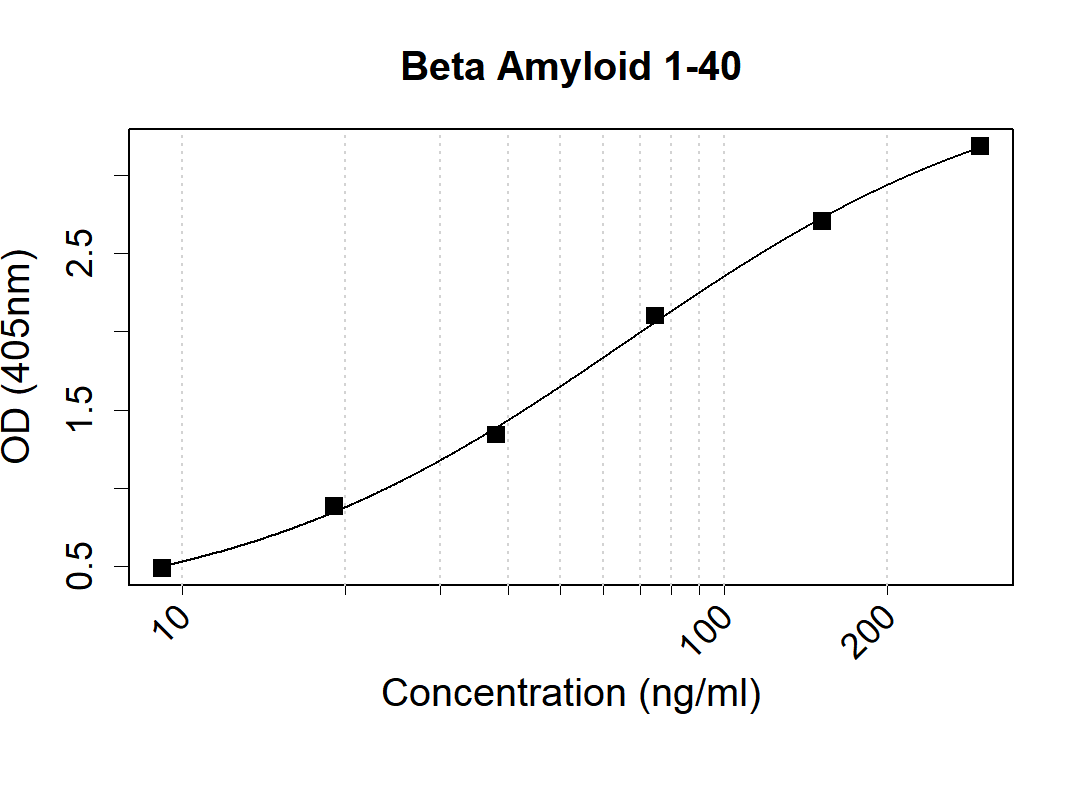anti-KCNQ1 antibody
CAT.NO. : ARG59538
US$ Please choose
US$ Please choose
Size:
Trail, Bulk size or Custom requests Please contact us
*产品价格可能会有所调整,请以品牌方官网实时更新的价格为准,以确保准确性。
概述
| 产品描述 | Rabbit Polyclonal antibody recognizes KCNQ1 |
|---|---|
| 反应物种 | Hu, Rat |
| 应用 | WB |
| 宿主 | Rabbit |
| 克隆 | Polyclonal |
| 同位型 | IgG |
| 靶点名称 | KCNQ1 |
| 抗原物种 | Human |
| 抗原 | Synthetic peptide corresponding to aa. 356-397 of Human KCNQ1. (QQKQRQKHFNRQIPAAASLIQTAWRCYAAENPDSSTWKIYIR) |
| 偶联标记 | Un-conjugated |
| 別名 | Voltage-gated potassium channel subunit Kv7.1; KQT-like 1; JLNS1; LQT; KVLQT1; Kv1.9; KCNA9; IKs producing slow voltage-gated potassium channel subunit alpha KvLQT1; SQT2; RWS; LQT1; WRS; KCNA8; ATFB3; Potassium voltage-gated channel subfamily KQT member 1; Kv7.1; ATFB1 |
应用说明
| 应用建议 |
| ||||
|---|---|---|---|---|---|
| 应用说明 | * The dilutions indicate recommended starting dilutions and the optimal dilutions or concentrations should be determined by the scientist. |
属性
| 形式 | Liquid |
|---|---|
| 纯化 | Affinity purification with immunogen. |
| 缓冲液 | 0.9% NaCl, 0.2% Na2HPO4, 0.05% Sodium azide and 5% BSA. |
| 抗菌剂 | 0.05% Sodium azide |
| 稳定剂 | 5% BSA |
| 浓度 | 0.5 mg/ml |
| 存放说明 | For continuous use, store undiluted antibody at 2-8°C for up to a week. For long-term storage, aliquot and store at -20°C or below. Storage in frost free freezers is not recommended. Avoid repeated freeze/thaw cycles. Suggest spin the vial prior to opening. The antibody solution should be gently mixed before use. |
| 注意事项 | For laboratory research only, not for drug, diagnostic or other use. |
生物信息
| 数据库连接 | Swiss-port # P51787 Human Potassium voltage-gated channel subfamily KQT member 1 Swiss-port # Q9Z0N7 Rat Potassium voltage-gated channel subfamily KQT member 1 |
|---|---|
| 基因名称 | KCNQ1 |
| 全名 | potassium channel, voltage gated KQT-like subfamily Q, member 1 |
| 背景介绍 | This gene encodes a voltage-gated potassium channel required for repolarization phase of the cardiac action potential. This protein can form heteromultimers with two other potassium channel proteins, KCNE1 and KCNE3. Mutations in this gene are associated with hereditary long QT syndrome 1 (also known as Romano-Ward syndrome), Jervell and Lange-Nielsen syndrome, and familial atrial fibrillation. This gene exhibits tissue-specific imprinting, with preferential expression from the maternal allele in some tissues, and biallelic expression in others. This gene is located in a region of chromosome 11 amongst other imprinted genes that are associated with Beckwith-Wiedemann syndrome (BWS), and itself has been shown to be disrupted by chromosomal rearrangements in patients with BWS. Alternatively spliced transcript variants have been found for this gene. [provided by RefSeq, Aug 2011] |
| 生物功能 | Probably important in cardiac repolarization. Associates with KCNE1 (MinK) to form the I(Ks) cardiac potassium current. Elicits a rapidly activating, potassium-selective outward current. Muscarinic agonist oxotremorine-M strongly suppresses KCNQ1/KCNE1 current in CHO cells in which cloned KCNQ1/KCNE1 channels were coexpressed with M1 muscarinic receptors. May associate also with KCNE3 (MiRP2) to form the potassium channel that is important for cyclic AMP-stimulated intestinal secretion of chloride ions, which is reduced in cystic fibrosis and pathologically stimulated in cholera and other forms of secretory diarrhea. [UniProt] |
| 细胞定位 | Cell membrane; Multi-pass membrane protein. Cytoplasmic vesicle membrane. Early endosome. Membrane raft. Endoplasmic reticulum. Basolateral cell membrane. [UniProt] |
| 预测分子量 | 75 kDa |
| 翻译后修饰 | Phosphorylation at Ser-27 by PKA; increases delayed rectifier potassium channel activity of the KCNQ1-KCNE1 complex through a macromolecular complex that includes PKA, PP1, and the targeting protein AKAP9. Ubiquitinated by NEDD4L; promotes internalization (PubMed:22024150). The ubiquitinylated form is internalized through a clathrin-mediated endocytosis by interacting with AP2M1 and is recycled back to the cell membrane via RAB4A and RAB11A (PubMed:23529131). Deubiquitinated by USP2; counteracts the NEDD4L-specific down-regulation of I(Ks) and restores the membrane localization. [UniProt] |
 New Products
New Products




